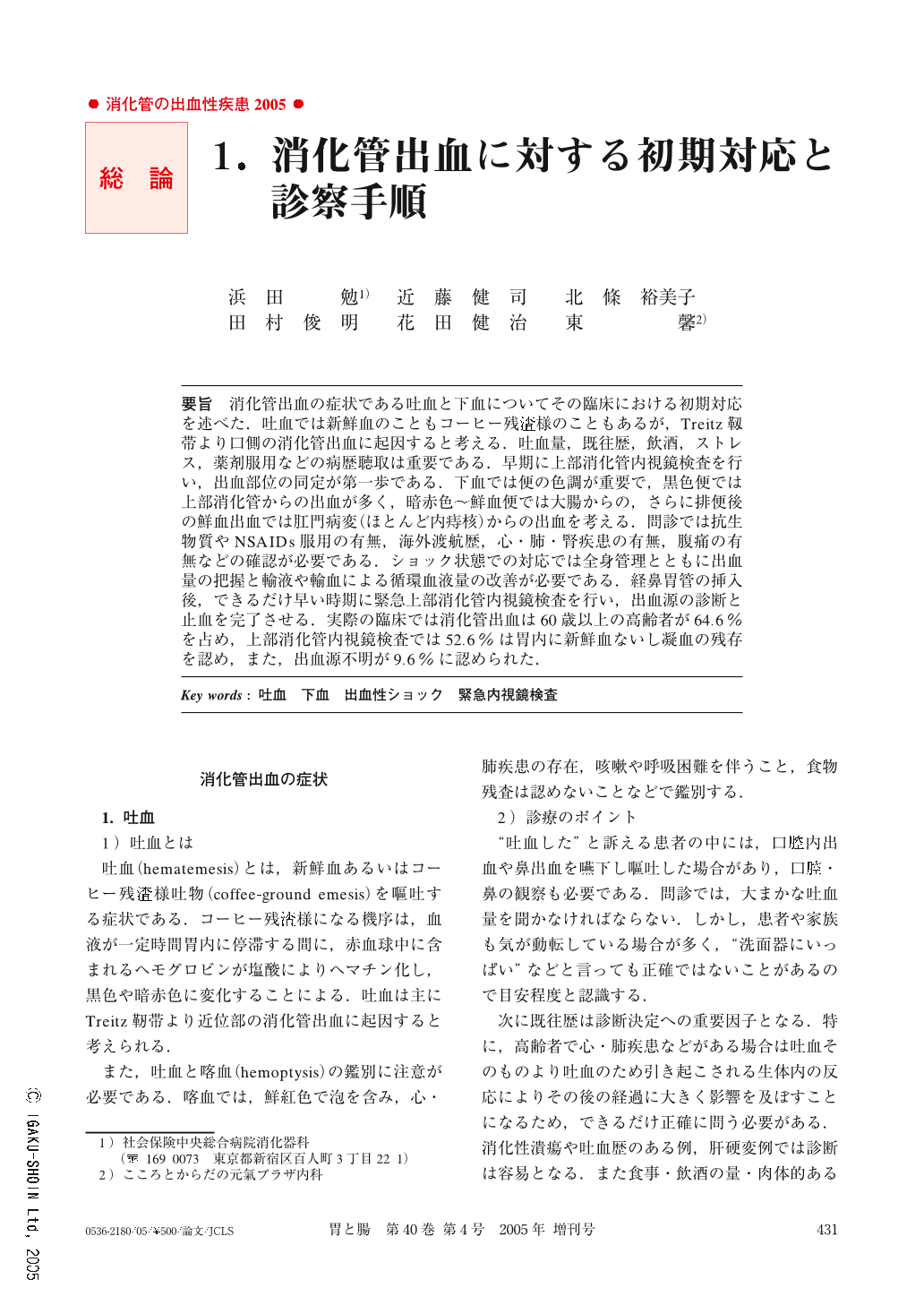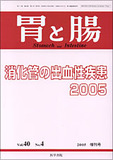Japanese
English
- 有料閲覧
- Abstract 文献概要
- 1ページ目 Look Inside
- 参考文献 Reference
要旨 消化管出血の症状である吐血と下血についてその臨床における初期対応を述べた.吐血では新鮮血のこともコーヒー残渣様のこともあるが,Treitz靱帯より口側の消化管出血に起因すると考える.吐血量,既往歴,飲酒,ストレス,薬剤服用などの病歴聴取は重要である.早期に上部消化管内視鏡検査を行い,出血部位の同定が第一歩である.下血では便の色調が重要で,黒色便では上部消化管からの出血が多く,暗赤色~鮮血便では大腸からの,さらに排便後の鮮血出血では肛門病変(ほとんど内痔核)からの出血を考える.問診では抗生物質やNSAIDs服用の有無,海外渡航歴,心・肺・腎疾患の有無,腹痛の有無などの確認が必要である.ショック状態での対応では全身管理とともに出血量の把握と輸液や輸血による循環血液量の改善が必要である.経鼻胃管の挿入後,できるだけ早い時期に緊急上部消化管内視鏡検査を行い,出血源の診断と止血を完了させる.実際の臨床では消化管出血は60歳以上の高齢者が64.6%を占め,上部消化管内視鏡検査では52.6%は胃内に新鮮血ないし凝血の残存を認め,また,出血源不明が9.6%に認められた.
We speak here about initial evaluation and resuscitation for overt GI bleeding presented with the passage of fresh or altered blood through the mouth or in the stool. The organs of origin of hematemesis and coffee-ground emesis are located at the oral side of Treitz ligament. Important points in the medical history of the patient include the quantity of blood lost, prior bleeding episodes, alcohol use, stress in ordinary life and liver disease. Furthermore, we should recognize that nonsteroidal anti-inflammatory drugs (NSAIDs) and aspirin can cause mucosal damage anywhere in the GI tract. Usually melena, a tarry stool, indicates bleeding from an upper source. Lesions lower down the bowel from the duodenum give rise to dark bright red blood in the stool and, in cases of piles, fissure or fistula the blood is passed unmixed with the feces. The first thing to be decided is whether the blood has originated from piles or other anal lesions or from a lesion higher up in the alimentary canal.
Patients in shock with GI bleeding might require volume dose administration and packed RBC transfusion until the patient's condition is hemodynamically stable. An NG aspiration is useful in assessing the activity and severity of upper GI bleeding. To diagnose the origin of the bleeding and to perform suitable therapeutic procedures, emergency endoscopy is recommended for patients as early as possible in the clinical course. The over-sixty-years old group accounts for 64.6 % of patients with GI bleeding. On endoscopy, bloody residue in the stomach was still observed in 52.6 % of the patients and, in 9.6 % of them, the source of the bleeding was not able to be recognized.

Copyright © 2005, Igaku-Shoin Ltd. All rights reserved.


